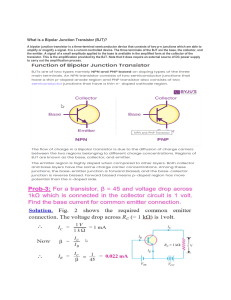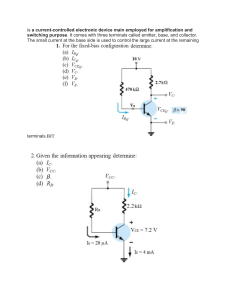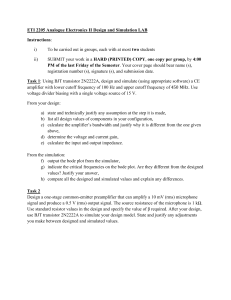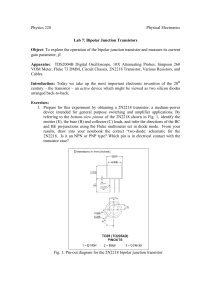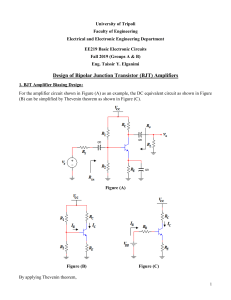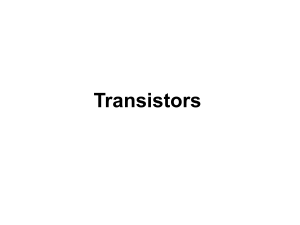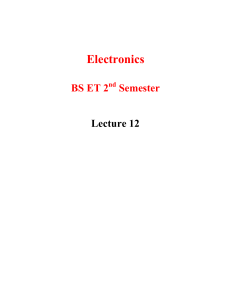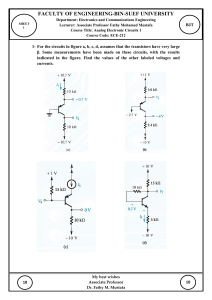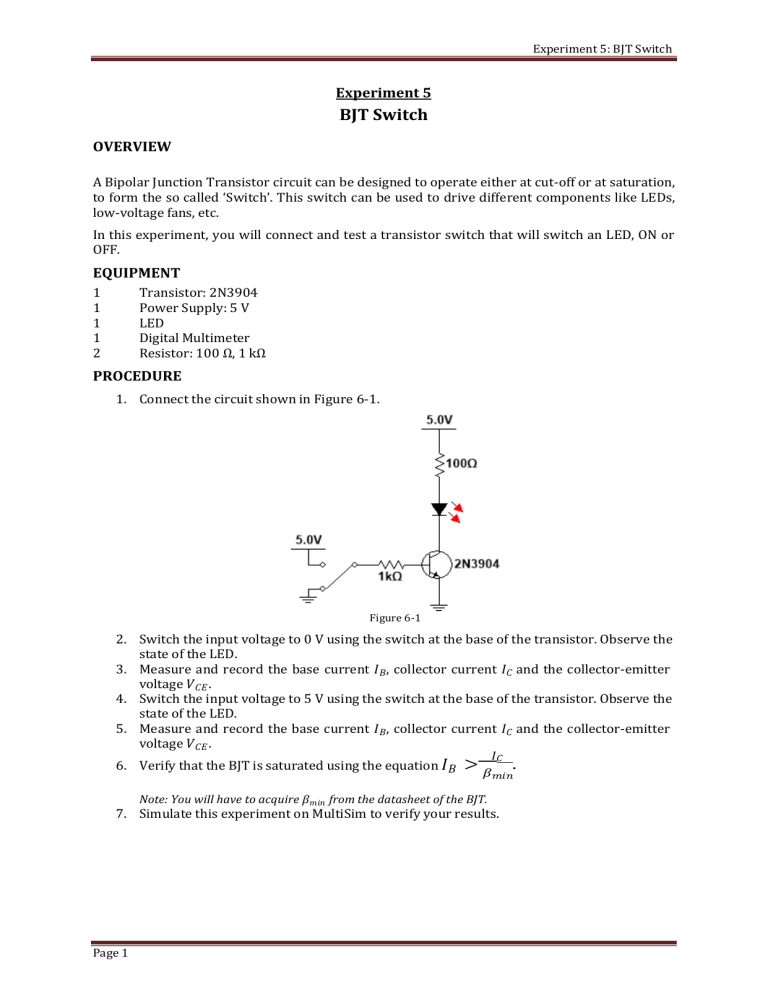
Experiment 5: BJT Switch Experiment 5 BJT Switch OVERVIEW A Bipolar Junction Transistor circuit can be designed to operate either at cut-off or at saturation, to form the so called ‘Switch’. This switch can be used to drive different components like LEDs, low-voltage fans, etc. In this experiment, you will connect and test a transistor switch that will switch an LED, ON or OFF. EQUIPMENT 1 1 1 1 2 Transistor: 2N3904 Power Supply: 5 V LED Digital Multimeter Resistor: 100 Ω, 1 kΩ PROCEDURE 1. Connect the circuit shown in Figure 6-1. Figure 6-1 2. Switch the input voltage to 0 V using the switch at the base of the transistor. Observe the state of the LED. 3. Measure and record the base current 𝐼𝐵, collector current 𝐼𝐶 and the collector-emitter voltage 𝑉𝐶𝐸 . 4. Switch the input voltage to 5 V using the switch at the base of the transistor. Observe the state of the LED. 5. Measure and record the base current 𝐼𝐵, collector current 𝐼𝐶 and the collector-emitter voltage 𝑉𝐶𝐸 . 6. Verify that the BJT is saturated using the equation 𝐼𝐵 𝐼 >𝛽𝐶 . Note: You will have to acquire 𝛽𝑚𝑖𝑛 from the datasheet of the BJT. 𝑚𝑖𝑛 7. Simulate this experiment on MultiSim to verify your results. Page 1
